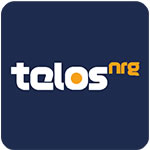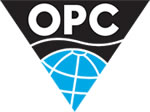Middle East / Africa
Country profile: Ethiopia
| Location: | Eastern Africa, west of Somalia |
| Climate: | tropical monsoon with wide topographic-induced variation |
| Terrain: | high plateau with central mountain range divided by Great Rift Valley |
| Size: | 1127127 sq. km total (Land area: 1119683 sq. km Water area: 7444 sq.km) |
| Population: | 78,254,090 |
| Languages: | Amarigna 32.7%, Oromigna 31.6%, Tigrigna 6.1%, Somaligna 6%, Guaragigna 3.5%, Sidamigna 3.5%, Hadiyigna 1.7%, other 14.8%, English (major foreign language taught in schools) (1994 census) |
| Government: | federal republic |
| Capital city: | Addis Ababa |
| Legal system: | based on civil law; currently transitional mix of national and regional courts; has not accepted compulsory ICJ jurisdiction |
| Currency: | birr (ETB) |
| Licensing: |
Country profile
Ethiopia is the oldest independent country in Africa. Unique among African countries, Ethiopia maintained its freedom from colonial rule, except during the Italian occupation of 1936-41. In 1974, a military junta, the Derg, deposed Emperor Haile Selassie, who had ruled since 1930, and established a socialist state. The Derg was toppled by a coalition of rebel forces, the Ethiopian People's Revolutionary Democratic Front (EPRDF), in 1991. A constitution was adopted in 1994 and Ethiopia's first multiparty elections were held in 1995. A two-year border war with Eritrea ended when a peace treaty was signed in December 2000. Disagreement on the location of the border between the two countries is ongoing, despite the final ruling of a commission charged with identifying the border.
Ethiopia's economy is primarily agrarian, with the agricultural sector accounting for 45 percent of GDP and 80 percent of the workforce. Coffee, Ethiopia's primary export crop, accounted for 58 percent of total exports in 1999, and has averaged two-thirds of all export earnings over the last 20 years. Other important agricultural exports include qat (khat), a mild stimulant from the leaves of the Catha Edulis shrub, pulses, oilseeds, live animals and hides. Ethiopia's real GDP growth was 5.4 percent in 2000 and increased to 7.7 percent in 2001. Growth in 2002 slowed to 1.6 percent as a severe drought decimated agricultural production. Growth was –3.9 percent in 2003, as Ethiopia’s economy shrank. It rebounded with 11.6 percent growth in 2004 and 5.4 percent in 2005. The projected growth for 2006 is 5.2 percent. Although continued donor support is seen as the crucial element in Ethiopia's economic reform, both the IMF and World Bank suspended new lending to Ethiopia during the border war with Eritrea. The suspension was lifted after the signing of the peace accord in December 2000.
The World Bank approved a $400 million loan to finance emergency recovery, military demobilization and reintegration projects. In July 2001, the IMF approved a $112 million PGRF to support Ethiopia's economic program. In November 2001, the IMF and World Bank announced that Ethiopia was eligible for a $1.9 billion debt relief package under the Heavily Indebted Poor Countries (HIPC) Initiative, becoming the 24th country to qualify for debt relief under the HIPC's enhanced framework. The savings in debt service resulting from the HIPC are substantial, amounting to about $96 million per year on average until 2021. The resources made available by debt relief provided under the HIPC have been allocated to key anti-poverty programs. Poverty-targeted expenditures in 2001-02 and 2002-03 increased by $259 million, substantially more than HIPC relief.
In 2005, Ethiopia received a $4.9 million grant from the Global Environmental Facility (GEF) to provide solar photovoltaic (PV) systems and micro hydro capacity. Oil and Natural Gas Ethiopia's current proven hydrocarbon reserves are minimal, but the potential to increase reserves to commercial viability is seen as promising. The country's geology is similar to that of its oil-producing neighbors to the east (on the Arabian peninsula) and the west (Sudan). In April 2001, the Ministry of Mines and Energy reported that hydrocarbon seeps had been discovered in several regions. The government plans to conduct feasibility studies to establish the extent and viability of the deposits. Hydrocarbon exploration in Ethiopia's Ogaden Basin began over 80 years ago (Standard Oil in 1920).
The Ethiopian government formed the Calub Gas Share Company (CGSC) to develop the fields. In 1994, the World Bank approved a $74 million loan to develop the Ogaden Basin fields. The Ethiopian Privatization Agency (EPA) put the CGSC up for privatization in 1998, but the EPA, citing weak bids, withdrew the tender. In December 1999, Houston-based Sicor announced that it had signed a $1.4 billion joint-venture deal to develop the Calub natural gas project. Under the terms of the agreement, Gasoil Ethiopia Project (GEP), the joint-venture firm, will acquire 95 percent of the CGSC under the Ethiopian government's privatization law. Currently, 5 percent of the CGSC is held by local private investors.
The Ethiopian government will hold a 20 percent interest in GEP with Sicor holding the remaining share. GEP plans to construct a 375-mile, 24-inch pipeline to transmit natural gas to the town of Awash, which is approximately 75 miles east of the capital Addis Ababa. At Awash, plans call for construction of a cryogenic liquids plant and two gas-to-liquids process systems with capacity to process 200 million cubic feet per day (Mmcf/d) of natural gas. The end products would be synthetic fuels and petrochemical feedstocks plus steam to generate electricity and help produce 20,000 bbl/d of potable water. A planned refinery would produce products including diesel, gasoline, kerosene and jet fuels.
The gas-to-liquids system would also produce some 500 tons of ammonia per day as feedstock for a urea plant to be constructed. Construction of the pipeline had originally been planned for 2002; however, gas development in Ogaden has not yet begun. In June 2003, the Ethiopian government signed an oil exploration deal with Petronas for 5,800 square mile tract in Gambela, in the far western part of the country. The region is closely related to the Sudan oil fields. Petronas has committed to investing in regional infrastructure, employing local staff, improving health services, and developing the skills of the ministry of Mines. Petronas is also interested in natural gas exploration in Ogaden, but no official plans have yet been made.
Downstream Ethiopia's petroleum consumption was estimated at 32,000 bbl/d in 2005. With the closure of the Assab refinery in 1997, Ethiopia is totally reliant on imports to meet its petroleum requirements. Some petroleum imports are received at the port of Djibouti, and shipped via rail and tanker truck to Ethiopia. With the recent development of oil in Sudan, however, Ethiopia has begun importing oil which, under COMESA, is not subject to tariffs. Oil imports from Sudan began in January 2003 transported by tanker trucks along a new road between the two countries. Since the trade began, however, oil shipments, which are expected to meet 85 percent of Ethiopia's gasoline requirements, have halted twice.
Nevertheless, the two countries have agreed to upgrade the road along this important transit corridor to increase commerce. Marketing and distribution of petroleum products is performed by ExxonMobil, Shell and Total. In June 2000, Shell purchased the downstream operations of Agip in several African countries including Ethiopia. The Ethiopian assets included over 100 service stations, two depots and four LPG filling plants.
Energy production and consumption
| Oil | Gas | |
| Production: | 7 bbl/day (2005 est.) | |
| Consumption: | 29,000 bbl/day (2005 est.) | |
| Exports: | ||
| Imports: | 28,460 bbl/day (2005 est.) | |
| Reserves: | 428,000 bbl (1 January 2006 est.) | 23 billion cu m (1 January 2006 est.) |
| Major fields: |
Ethiopia - recent news
| 21 Feb 22 |
Ethiopia turns on the turbines at giant Nile hydropower plant Ethiopia began producing electricity on Sunday from its Grand Ethiopian Renaissance Dam (GERD), a multi-billion-dollar hydropower plant on the River Nile that neighbours Sudan and Egypt have worried will cause water shortages downstream. |
| 05 Jan 21 |
Ethiopia: Siemens Gamesa seals its first wind farm project in Ethiopia Siemens Gamesa has signed its first wind power project in Ethiopia with state-owned electricity company Ethiopian Electric Power (EEP), strengthening its leadership in Africa as the country begins to expand its green energy capacity to meet ambitious renewable targets. |
Ethiopia - more news
Other countries in this region
- Algeria,
- Angola,
- Bahrain,
- Benin,
- Botswana,
- Burundi,
- Cameroon,
- Central Africa Republic,
- Chad,
- Comoros,
- Congo (Brazzaville),
- Congo (Democratic Rep.),
- Cote d'Ivoire,
- Djibouti,
- Egypt,
- Equatorial Guinea,
- Eritrea,
- Gabon,
- Gambia,
- Ghana,
- Guinea (Republic),
- Guinea Bissau,
- Iran,
- Iraq,
- Israel,
- Jordan,
- Kenya,
- Kuwait,
- Lebanon,
- Liberia,
- Libya,
- Madagascar,
- Malawi,
- Mali,
- Mauritania,
- Mauritius,
- Morocco,
- Mozambique,
- Namibia,
- Niger,
- Nigeria,
- Oman,
- Palestine,
- Qatar,
- Rwanda,
- Sao Tome,
- Saudi Arabia,
- Senegal,
- Seychelles,
- Sierra Leone,
- Somalia,
- Somaliland,
- South Africa,
- South Sudan,
- Sudan,
- Syria,
- Tanzania,
- Togo,
- Tunisia,
- Uganda,
- United Arab Emirates,
- Western Sahara,
- Yemen,
- Zambia,
- Zanzibar,
- Zimbabwe











